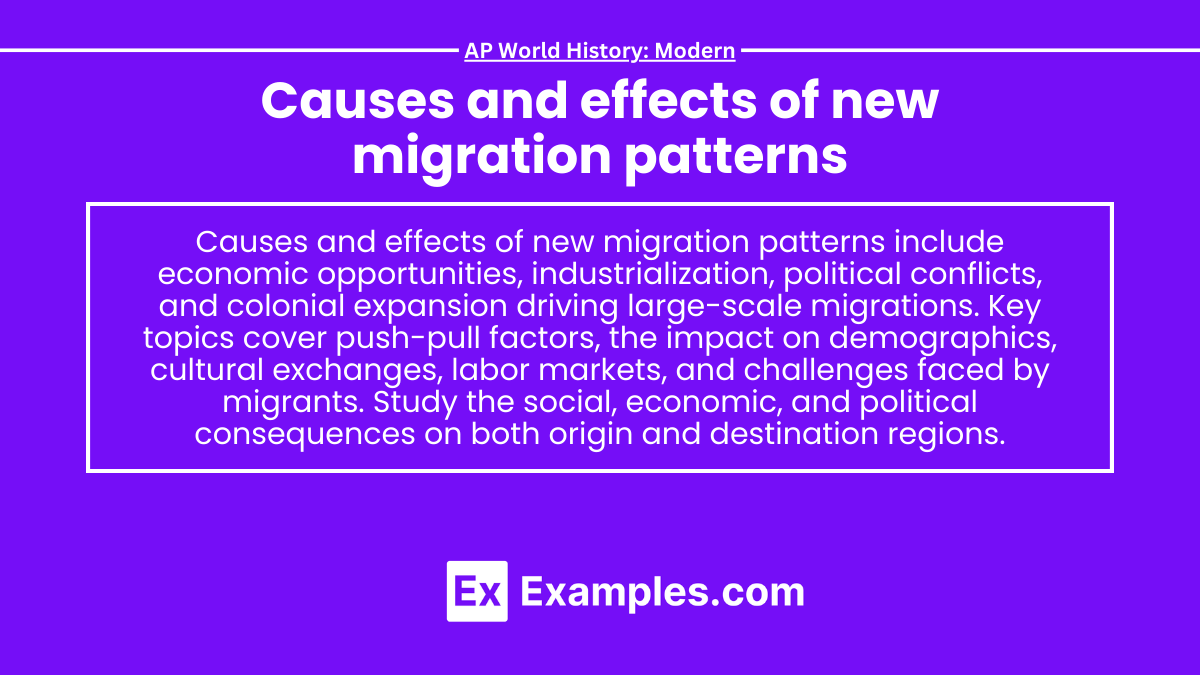The causes of new migration patterns in the modern era were driven by industrialization, economic opportunities, political upheavals, and colonial expansion. These migrations led to profound effects, such as urbanization, cultural exchanges, economic growth, and social tensions. The movement of people reshaped societies, economies, and environments, influencing global trade, labor markets, and demographic changes.
Learning Objective
In studying “Causes and Effects of New Migration Patterns” for AP World History: Modern, you should learn to identify the major factors driving migration in the modern era, including economic opportunities, political conflicts, and environmental changes. Analyze the social, cultural, and economic impacts of migration on both sending and receiving countries, including the formation of diasporas and changes in demographics. Evaluate the responses of governments and societies to new migration patterns and explore how these movements have influenced global cultural exchanges, labor markets, and national identities.
1. Causes of New Migration Patterns
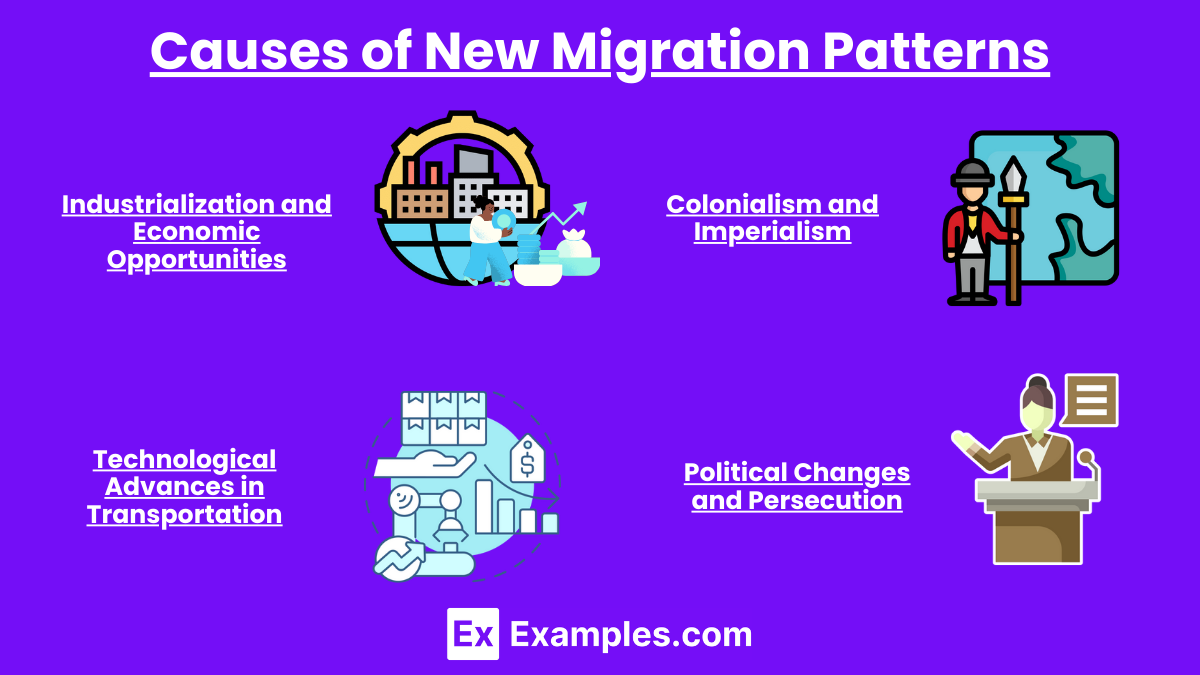
- Industrialization and Economic Opportunities: The Industrial Revolution created a demand for labor, drawing people from rural areas and less developed regions to urban centers and industrialized countries in search of work.
- Colonialism and Imperialism: European empires expanded, leading to forced and voluntary migration as colonizers, soldiers, administrators, and workers moved to and from colonies.
- Technological Advances in Transportation: Improvements in steamships and railways reduced travel times, making long-distance migration more feasible, especially across oceans.
- Political Changes and Persecution: Political upheavals, revolutions, and ethnic persecution (e.g., Jewish migration due to pogroms in Russia) forced many to seek refuge elsewhere.
2. Effects on Receiving Countries
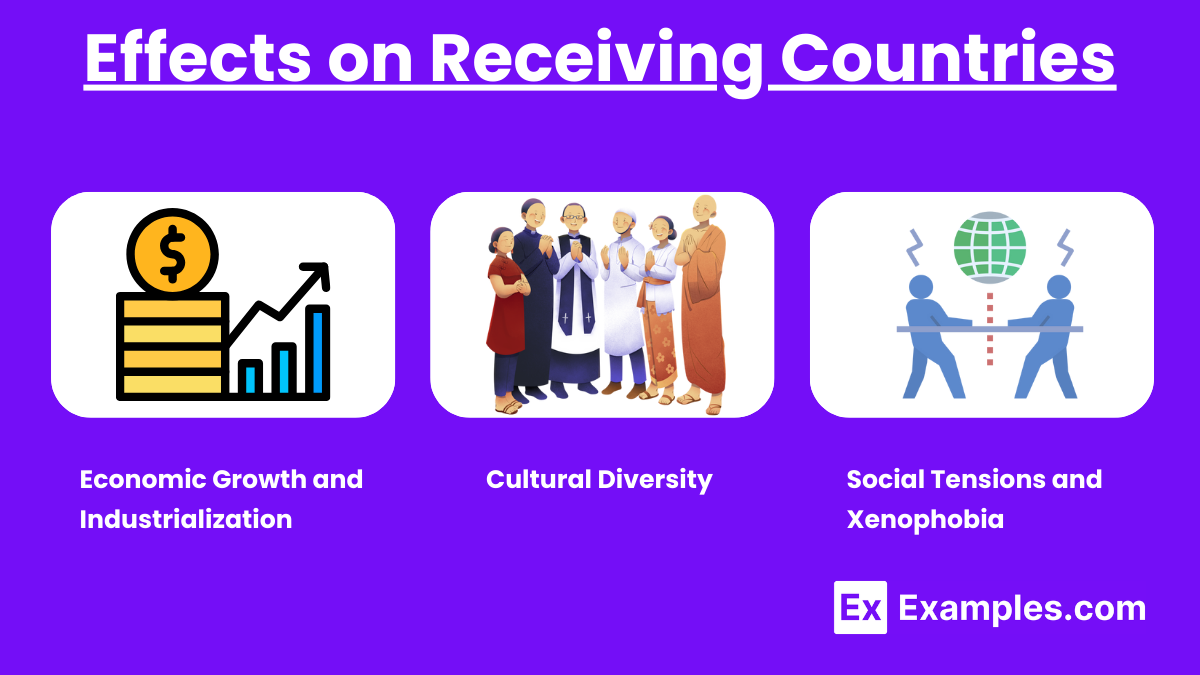
- Economic Growth and Industrialization: Migrants provided a source of cheap labor, fueling industrial growth in countries like the United States, Canada, and Australia.
- Cultural Diversity: The influx of diverse groups enriched the cultural landscape, introducing new languages, traditions, foods, and customs.
- Social Tensions and Xenophobia: The arrival of large numbers of immigrants often led to social tensions, discriminatory laws, and anti-immigrant sentiments, such as the Chinese Exclusion Act in the United States.
3. Environmental and Demographic Effects
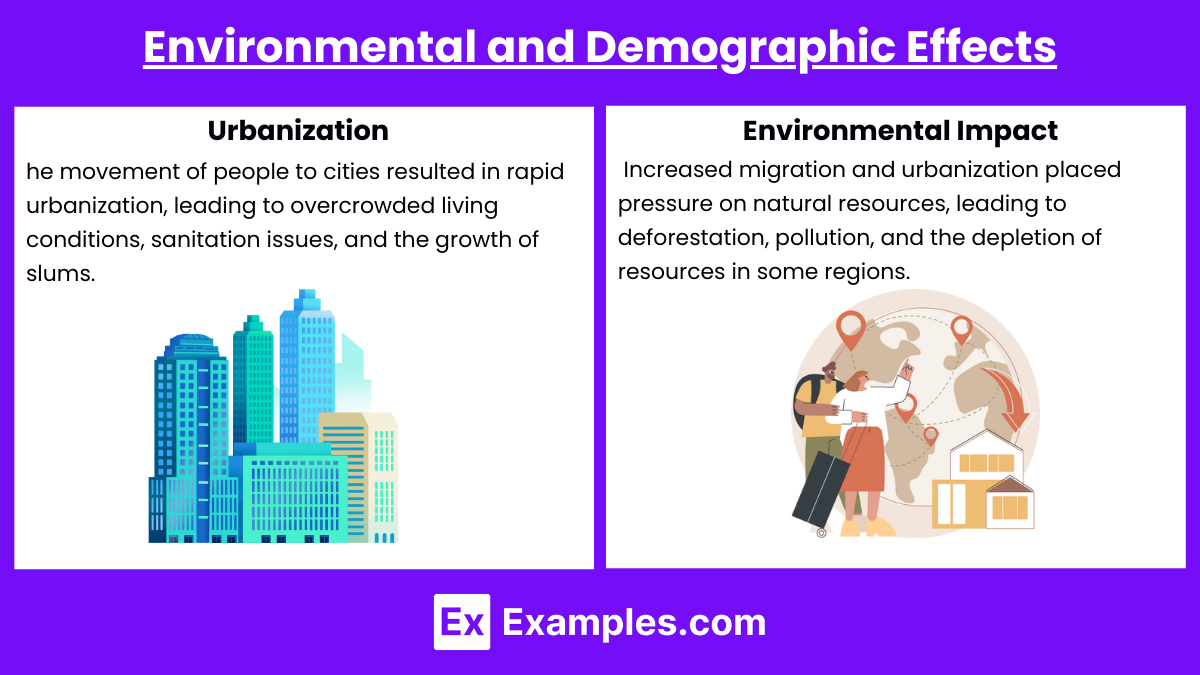
- Urbanization: The movement of people to cities resulted in rapid urbanization, leading to overcrowded living conditions, sanitation issues, and the growth of slums. The process by which an increasing number of people migrate from rural areas to urban centers, leading to the growth and expansion of cities. This phenomenon gained momentum during the Industrial Revolution in the 19th century when job opportunities in factories and industries drew large populations to cities in search of better employment and living conditions.
- Environmental Impact: Increased migration and urbanization placed pressure on natural resources, leading to deforestation, pollution, and the depletion of resources in some regions. The environmental impact refers to the various ways in which human activities affect the natural environment. As societies grow and develop, they often alter ecosystems, deplete resources, and contribute to pollution, leading to significant changes in the environment.
4. Labor Migration and the Global Economy
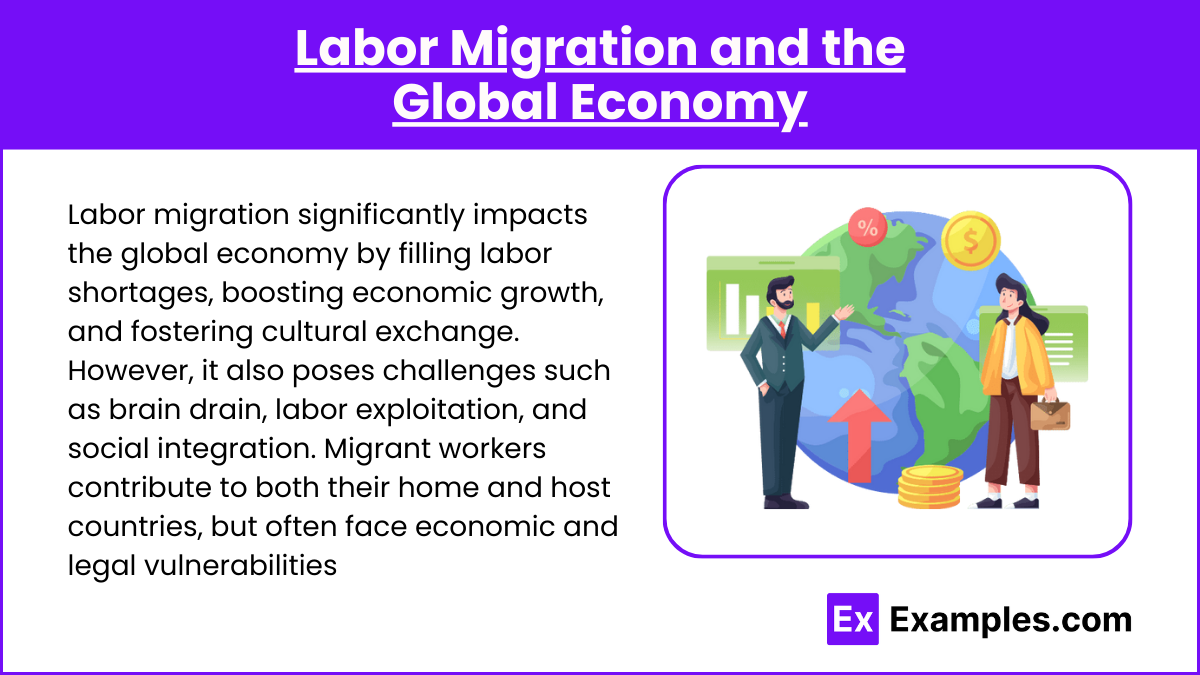
Labor migration significantly impacts the global economy by filling labor shortages, boosting economic growth, and fostering cultural exchange. However, it also poses challenges such as brain drain, labor exploitation, and social integration. Migrant workers contribute to both their home and host countries, but often face economic and legal vulnerabilities.
- Indentured Labor: After the abolition of slavery in the 19th century, plantation owners in European colonies faced a severe labor shortage. To address this, they turned to indentured labor as an alternative, recruiting workers primarily from countries like India, China, and other parts of Asia. These workers were bound by contracts (indentures) that typically lasted 5 to 7 years, promising them wages, food, shelter, and often the prospect of land or a return passage at the end of their service.
- Emergence of Migrant Networks: As people migrated, they established networks connecting their places of origin with their new destinations. These networks facilitated the exchange of information, helping migrants navigate the challenges of relocating, such as finding jobs, housing, and social support. These networks often started with a single person or family who migrated, then expanded as they helped others from their community or family to join them.
Examples
Example 1: The Irish Potato Famine (1845-1852)
The Irish Potato Famine caused mass migration to the United States, leading to labor contributions but also increased anti-Irish sentiment and discrimination.
Example 2: Indian Indentured Labor Migration (19th Century)
After slavery’s abolition, Indian laborers migrated to work on plantations in the Caribbean, Africa, and Fiji, influencing local culture and demographics.
Example 3: Chinese Migration During the Gold Rush (1850s-1860s)
Chinese laborers migrated to California for gold and railroad work, contributing to economic growth but facing discrimination and the Chinese Exclusion Act.
Example 4: Jewish Migration Due to Pogroms (Late 19th-Early 20th Century)
Pogroms in Russia forced Jewish migration to the U.S. and Europe, enriching host cultures but also leading to overcrowded immigrant neighborhoods.
Example 5: Post-World War II Migration to Western Europe
Labor shortages prompted migration from former colonies to Europe, fueling economic growth, but also resulting in racial tensions and anti-immigrant policies.
MCQs
Question 1:
Which of the following was a primary cause of Irish migration to the United States in the mid-19th century?
A) Industrial Revolution
B) Potato Famine
C) Religious Persecution
D) Gold Rush
Answer: (B) Potato Famine
Explanation
The Irish Potato Famine (1845-1852) led to widespread starvation and poverty in Ireland, forcing many to migrate to the United States for survival.
Question 2:
What was a major effect of Indian indentured labor migration in the 19th century?
A) Industrialization in India
B) Cultural influence in the Caribbean
C) End of European colonialism
D) Rise of global trade networks
Answer: (B) Cultural influence in the Caribbean
Explanation
Indian indentured labor migration introduced Indian cuisine, music, and festivals to the Caribbean, significantly shaping the cultural landscape of the region.
Question 3
Which factor contributed to Chinese migration during the California Gold Rush?
A) Overpopulation in China
B) Religious freedom
C) Economic opportunity
D) Political stability
Answer: (C) Economic opportunity
Explanation
The California Gold Rush (1850s) promised wealth and job opportunities, attracting many Chinese migrants seeking improved economic prospects in the United States.

